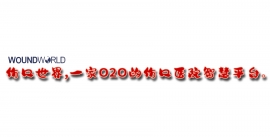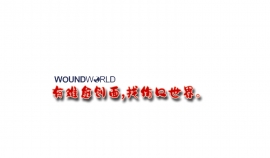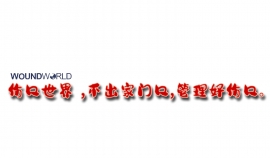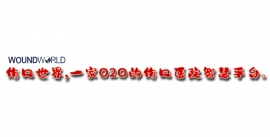文献精选
Ameya S. Kulkarni,1,2, * Sriram Gubbi,3 and Nir Barzilai1,2
1Institute for Aging Research, Albert Einstein College of Medicine, Bronx, New York, NY, USA
2Department of Medicine, Division of Endocrinology, Albert Einstein College of Medicine, Bronx, New York, NY, USA
3Metabolic Diseases Branch, National Institute of Diabetes and Digestive and Kidney Diseases, National Institutes of Health, Bethesda, MD, USA
*Correspondence: 该Email地址已收到反垃圾邮件插件保护。要显示它您需要在浏览器中启用JavaScript。 (A.S.K.), 该Email地址已收到反垃圾邮件插件保护。要显示它您需要在浏览器中启用JavaScript。 (N.B.)
https://doi.org/10.1016/j.cmet.2020.04.001
Biological aging involves an interplay of conserved and targetable molecular mechanisms, summarized as the hallmarks of aging. Metformin, a biguanide that combats age-related disorders and improves health span, is the first drug to be tested for its age-targeting effects in the large clinical trial—TAME (targeting aging by metformin). This review focuses on metformin’s mechanisms in attenuating hallmarks of aging and their interconnectivity, by improving nutrient sensing, enhancing autophagy and intercellular communication, protecting against macromolecular damage, delaying stem cell aging, modulating mitochondrial function, regulating transcription, and lowering telomere attrition and senescence. These characteristics make metformin an attractive gerotherapeutic to translate to human trials.
Subodh Kumar a,**, Hallie Morton a , Neha Sawant a , Erika Orlov a , Lloyd E Bunquin a , Jangampalli Adi Pradeepkiran a , Razelle Alvir a , P. Hemachandra Reddy a , b ,c,d,e,
a Internal Medicine Department, Texas Tech University Health Sciences Center, Lubbock, TX, USA
b Neuroscience & Pharmacology, Texas Tech University Health Sciences Center, Lubbock, TX, USA
c Neurology Departments School of Medicine, Texas Tech University Health Sciences Center, Lubbock, TX, USA
d Public Health Department of Graduate School of Biomedical Sciences, Texas Tech University Health Sciences Center, Lubbock, TX, USA
e Department of Speech, Language and Hearing Sciences, School Health Professions, Texas Tech University Health Sciences Center, Lubbock, TX, USA
ARTICLE INFO
Keywords: Alzheimer’s disease MicroRNA-455-3p Mouse models Mitochondrial biogenesis Synaptic activity
ABSTRACT
Background: MicroRNA-455-3p is one of the highly conserved miRNAs involved in multiple cellular functions in humans and we explored its relevance to learning and memory functions in Alzheimer’s disease (AD). Our recent in vitro studies exhibited the protective role of miR-455-3p against AD toxicities in reducing full-length APP and amyloid-β (Aβ) levels, and also in reducing defective mitochondrial biogenesis, impaired mitochondrial dynamics and synaptic deficiencies. In the current study, we sought to determine the function of miR-455-3p in mouse models.
Methods: For the first time we generated both transgenic (TG) and knockout (KO) mouse models of miR-455-3p. We determined the lifespan extension, cognitive function, mitochondrial biogenesis, mitochondrial dynamics, mitochondrial morphology, dendritic spine density, synapse numbers and synaptic activity in miR-455-3p TG and KO mice.
Results: MiR-455-3p TG mice lived 5 months longer than wild-type (WT) counterparts, whereas KO mice lived 4 months shorter than WT mice. Morris water maze test showed improved cognitive behavior, spatial learning and memory in miR-455-3p TG mice relative to age-matched WT mice and miR-455-3p KO mice. Further, mitochondrial biogenesis, dynamics and synaptic activities were enhanced in miR-455-3p TG mice, while these were reduced in KO mice. Overall, overexpressed miR-455-3p in mice displayed protective effects, whereas depleted miR-455-3p in mice exhibited deleterious effects in relation to lifespan, cognitive behavior, and mitochondrial and synaptic activities.
Conclusion: Both mouse models could be ideal research tools to understand the molecular basis of aging and its relevance to AD and other age-related diseases.
* Corresponding author. Internal Medicine, Cell Biology & Biochemistry, Neuroscience & Pharmacology, Neurology, Public Health and School of Health Professions, Texas Tech University Health Sciences Center, 3601 4th Street, Lubbock, TX, 79430, United States.
** Corresponding author. Internal Medicine Department, Texas Tech University Health Sciences Center, 3601 4th Street, Lubbock, TX, 79430, United States. E-mail addresses: 该Email地址已收到反垃圾邮件插件保护。要显示它您需要在浏览器中启用JavaScript。 (S. Kumar), 该Email地址已收到反垃圾邮件插件保护。要显示它您需要在浏览器中启用JavaScript。 (P.H. Reddy).
https://doi.org/10.1016/j.redox.2021.102182
Received 14 October 2021; Received in revised form 2 November 2021; Accepted 6 November 2021
Available online 9 November 2021
2213-2317/© 2021 The Authors. Published by Elsevier B.V. This is an open access article under the CC BY license (http://creativecommons.org/licenses/by/4.0/).
Matthew J. Yousefzadeh a,1 , Yi Zhu b,1 , Sara J. McGowan a,1 , Luise Angelini a,1 , Heike Fuhrmann-Stroissnigg a ,Ming Xu b , Yuan Yuan Ling a , Kendra I. Melos a , Tamar Pirtskhalava b , Christina L. Inman b , Collin McGuckian a ,Erin A. Wade a , Jonathon I. Kato a , Diego Grassi a , Mark Wentworth c , Christin E. Burd d , Edgar A. Arriaga e ,Warren L. Ladiges f , Tamara Tchkonia b , James L. Kirkland b , Paul D. Robbins a, ⁎, Laura J. Niedernhofer a, ⁎
a Department of Molecular Medicine and the Center on Aging, The Scripps Research Institute, 130 Scripps Way, Jupiter, FL 33458, United States
b Robert and Arlene Kogod Center on Aging, Mayo Clinic, 200 First St., S.W., Rochester, MN 55905, United States
c Office of Research Regulatory Support, Mayo Clinic, Rochester, MN 55905, United States
d Department of Molecular Genetics and Cancer Biology and Genetics, The Ohio State University, Columbus, OH 43210, United States
e Department of Chemistry, University of Minnesota, Minneapolis, MN 55455-0431, United States
f Department of Comparative Medicine, University of Washington, Seattle, WA 98195, United States
article info
Article history:
Received 11 July 2018
Received in revised form 30 August 2018
Accepted 10 September 2018
Available online 29 September 2018
Keywords: Senolytic Aging Progeria Healthspan Lifespan Senescence
⁎ Corresponding author at: Institute on the Biology of Aging and Metabolism, Department of Biochemistry, Molecular Biology and Biophysics, University of Minnesota Medical School, 6-155 Jackson Hall, 321 Church Street, SE, Minneapolis, MN 55455, United States. E-mail addresses: 该Email地址已收到反垃圾邮件插件保护。要显示它您需要在浏览器中启用JavaScript。 (P.D. Robbins), 该Email地址已收到反垃圾邮件插件保护。要显示它您需要在浏览器中启用JavaScript。 (L.J. Niedernhofer). 1 Contributed equally.
abstract
Background: Senescence is a tumor suppressor mechanism activated in stressed cells to prevent replication of damaged DNA. Senescent cells have been demonstrated to play a causal role in driving aging and age-related diseases using genetic and pharmacologic approaches. We previously demonstrated that the combination of dasatinib and the flavonoid quercetin is a potent senolytic improving numerous age-related conditions including frailty, osteoporosis and cardiovascular disease. The goal of this study was to identify flavonoids with more potent senolytic activity.
Methods: A panel of flavonoid polyphenols was screened for senolytic activity using senescent murine and human fibroblasts, driven by oxidative and genotoxic stress, respectively. The top senotherapeutic flavonoid was tested in mice modeling a progeroid syndrome carrying a p16INK4a-luciferase reporter and aged wild-type mice to determine the effects of fisetin on senescence markers, age-related histopathology, disease markers, health span and lifespan. Human adipose tissue explants were used to determine if results translated.
Findings: Of the 10 flavonoids tested, fisetin was the most potent senolytic. Acute or intermittent treatment of progeroid and old mice with fisetin reduced senescence markers in multiple tissues, consistent with a hit-and run senolytic mechanism. Fisetin reduced senescence in a subset of cells in murine and human adipose tissue, demonstrating cell-type specificity. Administration of fisetin to wild-type mice late in life restored tissue homeostasis, reduced age-related pathology, and extended median and maximum lifespan.
Interpretation: The natural product fisetin has senotherapeutic activity in mice and in human tissues. Late life intervention was sufficient to yield a potent health benefit. These characteristics suggest the feasibility to translation to human clinical studies.
Fund: NIH grants P01 AG043376 (PDR, LJN), U19 AG056278 (PDR, LJN, WLL), R24 AG047115 (WLL), R37 AG013925 (JLK), R21 AG047984 (JLK), P30 DK050456 (Adipocyte Subcore, JLK), a Glenn Foundation/American Federation for Aging Research (AFAR) BIG Award (JLK), Glenn/AFAR (LJN, CEB), the Ted Nash Long Life and Noaber Foundations (JLK), the Connor Group (JLK), Robert J. and Theresa W. Ryan (JLK), and a Minnesota Partnership Grant (AMAY-UMN#99)-P004610401–1 (JLK, EAA).
© 2018 The Authors. Published by Elsevier B.V. This is an open access article under the CC BY-NC-ND license
(http://creativecommons.org/licenses/by-nc-nd/4.0/).
Research in Context
Evidence before this study
Pharmacological targeting of fundamental mechanisms of aging has the ability to reduce the severity or delay the onset of multiple age-associated co-morbidities simultaneously. One key mechanism demonstrated to drive aging is cellular senescence, whereby accumulation of DNA damage and/or other cellular stressors cause proliferating or terminally differentiated non-dividing cells to enter a state characterized by profound chromatin and secretome changes, increased expression of the cell cycle inhibitor p16Ink4a in many but not all senescent cells, replicative arrest, and resistance to apoptosis. Senescent cells can develop a senescence-associated secretory phenotype (SASP), which has deleterious paracrine and systemic effects. Senescent cells are rare in young individuals, but increase with age in multiple tissues. Drugs able to selectively kill senescent cells, termed senolytics, have been identified including the combination of dastinib and quercetin (D ± Q), which improves many aspects of aging in mouse models of accelerated and natural aging. However, safer and improved drugs targeting senescence likely are needed to eliminate senescent cells safely from multiple organs or even within a single tissue.
Added value of the study
This study identifies the flavonoid polyphenol fisetin as having greater senotherapeutic activity in cultured cells than quercetin. In addition, fisetin had potent senotherapeutic activity in vivo. Treatment of progeroid and aged wild-type mice acutely or intermittently with fisetin reduced senescence markers in multiple tissues and a subset of cell types in adipose tissue. Importantly, chronic administration of fisetin to wild-type mice late in life improved tissue homeostasis, suppressed age-related pathology, and extended median and maximum lifespan. This result, similar to a recent report on the combination of D ± Q, is the first to document extension of both health span and lifespan by a senolytic with few side effects, even though administration was started late in life.
Implications of all the available evidence
Taken together, these data establish the natural product fisetin as a potent senotherapeutic, able to reduce the burden of senescent T, NK, progenitor, and endothelial cells from fat tissue, and demonstrate that reducing the senescent cell burden in mice even late in life is sufficient to have a significant health impact. Given the known safety profile of fisetin in humans, clinical trials are beginning in order to test if fisetin can be used effectively to reduce senescent cell burden and alleviate dysfunction in elderly subjects.
Leslie B. Gordon,1,2, * Frank G. Rothman,3 Carlos Lo´pez-Otı´n,4 and Tom Misteli5, *
1 Department of Anesthesia, Boston Children’s Hospital and Harvard Medical School, Boston, MA 02115, USA
2 Department of Pediatrics, Hasbro Children’s Hospital and Warren Alpert Medical School of Brown University, Providence, RI 02912, USA
3 Division of Biology and Medicine, Brown University, Providence, RI 02912, USA
4 Departamento de Bioquı´mica y Biologı´a Molecular, Instituto Universitario de Oncologı´a (IUOPA), Universidad de Oviedo, 33006 Oviedo, Spain
5National Cancer Institute, NIH, Bethesda, MD 20892, USA
*Correspondence: 该Email地址已收到反垃圾邮件插件保护。要显示它您需要在浏览器中启用JavaScript。 (L.B.G.), 该Email地址已收到反垃圾邮件插件保护。要显示它您需要在浏览器中启用JavaScript。 (T.M.)
http://dx.doi.org/10.1016/j.cell.2013.12.028
Rare diseases are powerful windows into biological processes and can serve as models for the development of therapeutic strategies. The progress made on the premature aging disorder Progeria is a shining example of the impact that studies of rare diseases can have.




